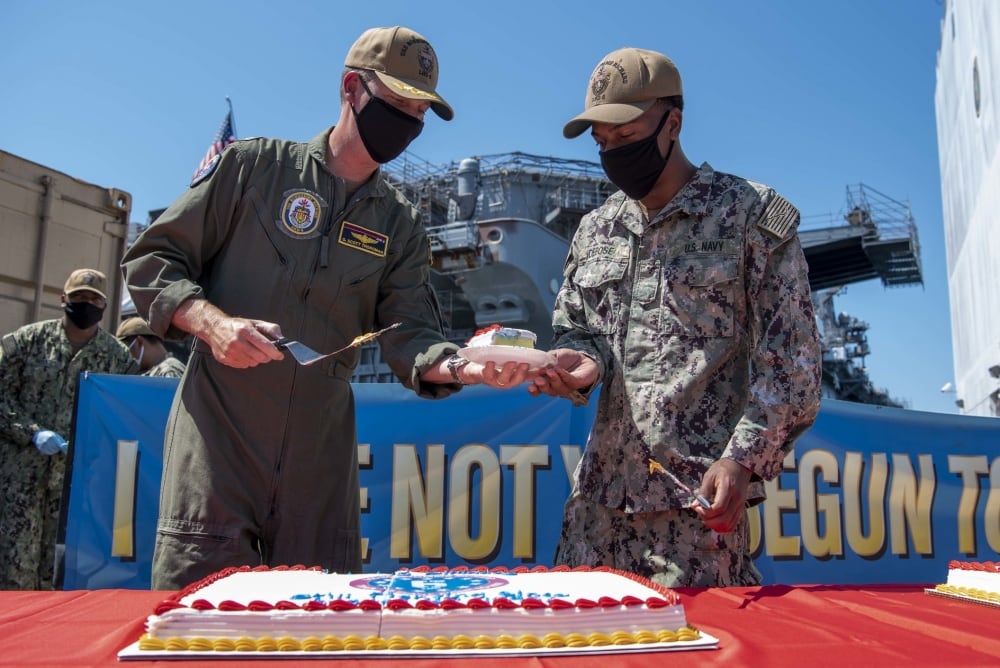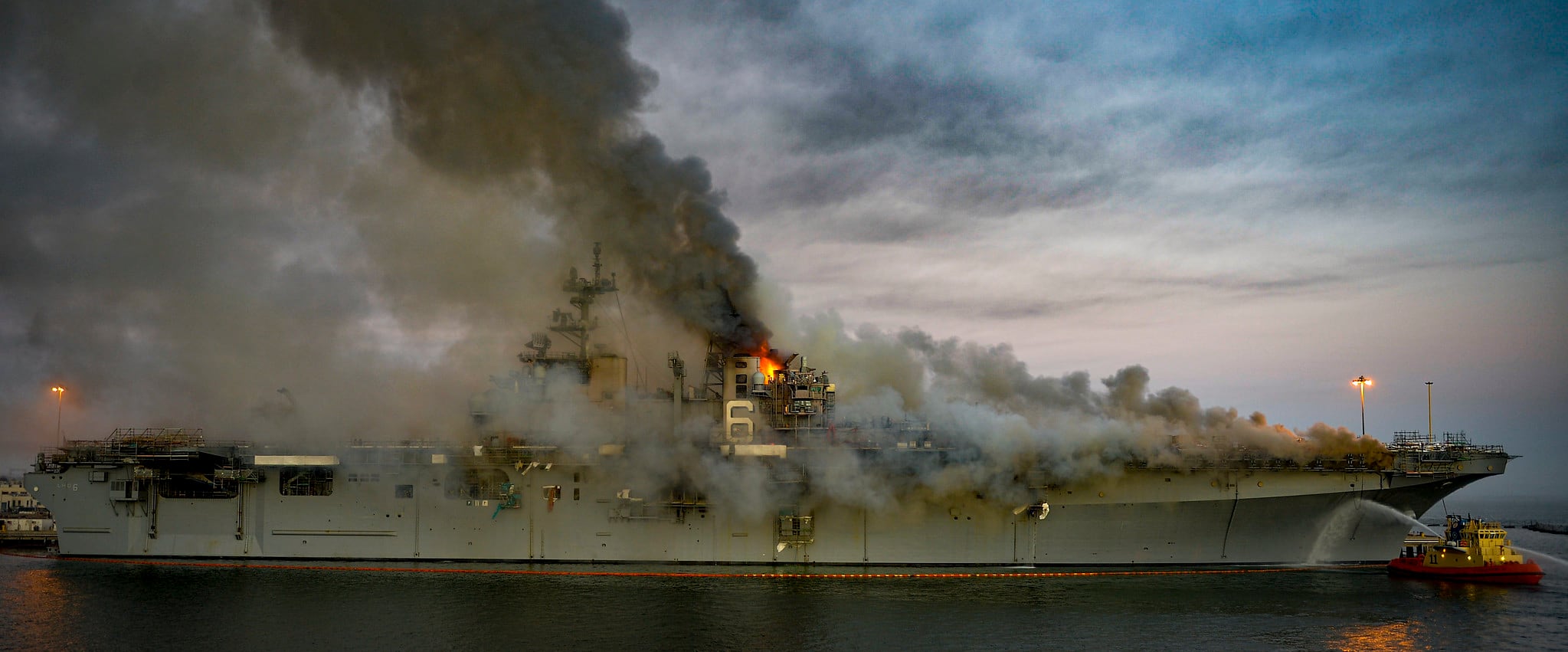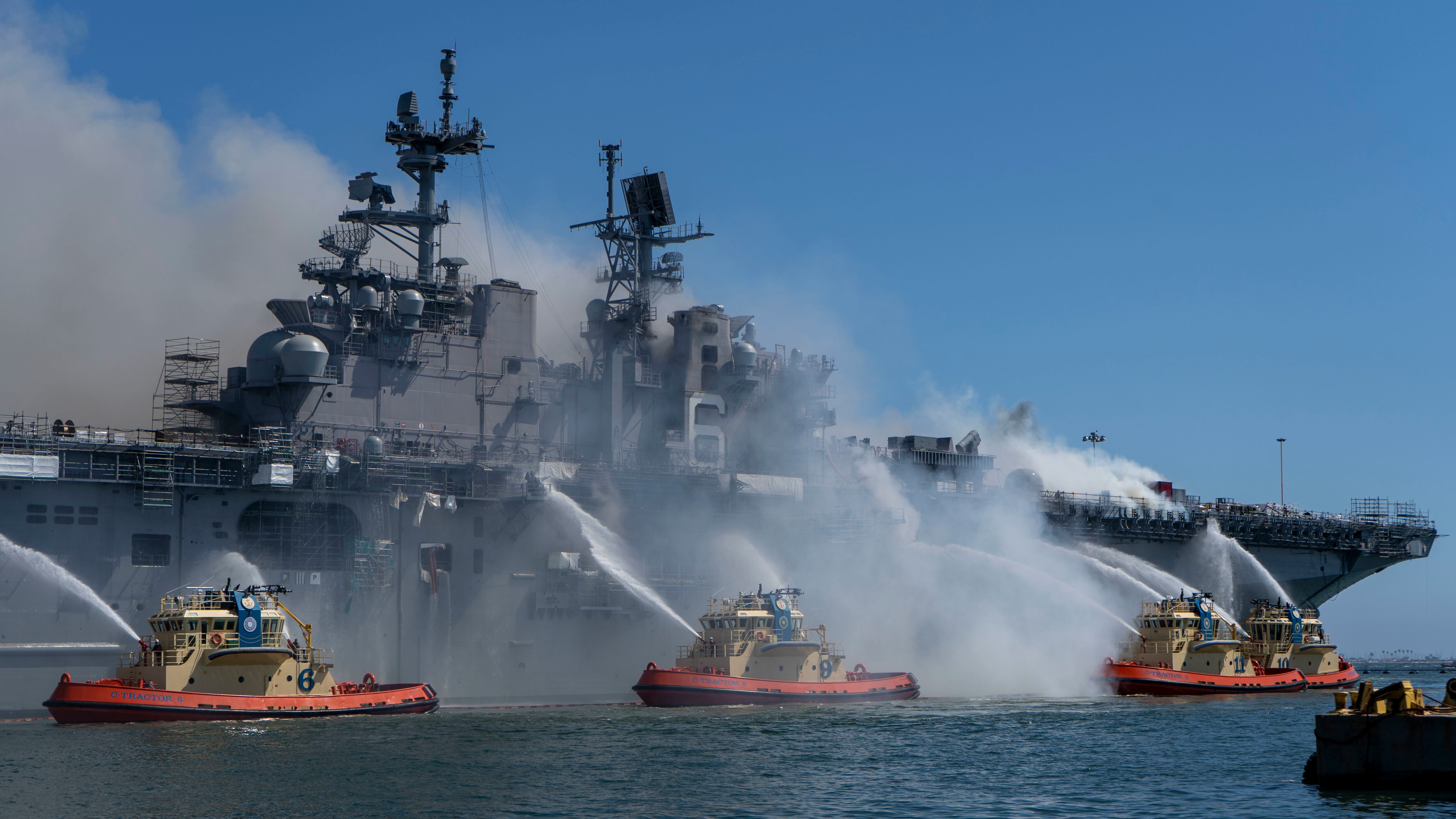As the one-year anniversary approaches of a hellacious fire that destroyed the amphibious assault ship Bonhomme Richard as it sat pierside in San Diego, the Navy has yet to explain how the devastating peacetime loss of the big-deck amphib happened, but answers may be coming soon.
Cmdr. Rebecca Rebarich, a U.S. Pacific Fleet spokeswoman, said in an email that the command investigation into the mishap “is currently under review and is expected to be completed later this summer.”
It will be released to the public upon completion, she added.
Naval Sea Systems Command conducted its own probe into the fire but did not provide an update to that investigation’s status by Navy Times’ deadline Tuesday.
The Naval Criminal Investigative Service’s separate investigation into the inferno remains ongoing and “no charges have been filed at this time,” according to NCIS spokesman Jeff Houston.
“Out of respect for the investigative process, NCIS does not comment on or confirm details relating to ongoing investigations,” he said.
The amphib, one of 10 such ships and in the midst of a $250 million upgrade to accommodate the Navy’s next-generation fighter jet, caught fire July 12, 2020. It then burned for four days before sailors from across the waterfront were finally able to put it out.
Bonhomme Richard was scorched from stem to stern, with fire engulfing the well deck, the superstructure and the living and working spaces up forward.
Temperatures inside the ship’s skin reached 1,000 degrees, and there was extensive damage to the flight deck, island, mast and lower levels.
Officials said last fall that fixing the ship would have required about 60 percent of the amphib to be replaced, and so the once-mighty arm of American seapower was towed to the Gulf of Mexico to be turned into scrap earlier this year.

The fact that nearly a year has passed with the Navy offering no explanation for the peacetime loss of a warship raises questions, according to Lawrence Brennan, a retired Navy captain and professor at the Fordham University Law School.
“There could be legitimate reasons, but in the absence of any explanation, it’s unusual,” Brennan told Navy Times.
“I can’t see something holding it up for the year,” he added. “And if there is, tell us. Tell us you can’t tell us.”
Many past investigations of ship calamities that were more deadly and more damaging did not take as long, he noted.
RELATED

Brennan was the legal officer for the aircraft carrier Nimitz when that ship suffered a deck fire in 1981 that killed 14 sailors and wounded nearly 50.
“We did the investigation into the casualty, and under deadlines from (then-Navy Secretary) John Lehman, finished the report within five weeks,” Brennan told Navy Times.
Investigations were also promptly held and wrapped up during World War II following “Halsey’s Typhoon” in December 1944, a storm that sank several Pacific Fleet ships and killed nearly 800 sailors.
If the Navy is getting ready to prosecute one or more sailors for starting the Bonhomme Richard blaze, that might account for the delay, Brennan said.
The Associated Press and other outlets reported last summer that authorities were questioning a sailor on suspicion of arson.
Brennan said looming charges might explain the slow-rolling of answers regarding what happened to Bonhomme Richard.
But given the lack of information released by Big Navy, he added, that is mere speculation.
“They’ve said nothing about what happened,” he said.
Geoff is the managing editor of Military Times, but he still loves writing stories. He covered Iraq and Afghanistan extensively and was a reporter at the Chicago Tribune. He welcomes any and all kinds of tips at geoffz@militarytimes.com.





